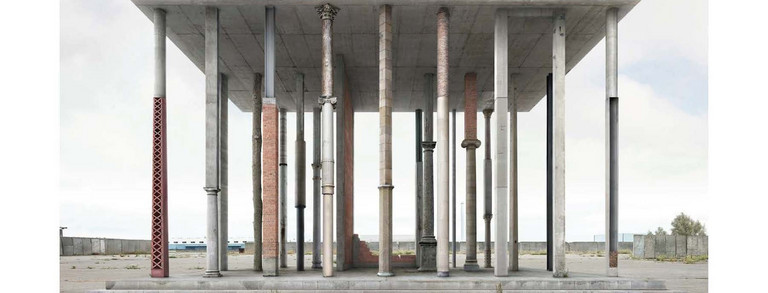Contents
“…buildings are supposed to render pride visible, and the victory over gravity, the will to power. Architecture is a kind of eloquence of power in forms…”
Friedrich Nietzsche, Skirmishes of an Untimely Man, 1889*
Our cities, on the contrary, are degenerating. Icons flood the horizon. The power of silence, however, is manifested only in the monument. With this theory, the Chair for Building Typologies at the TU Dortmund would like to place the reflection on the position of public buildings – in particular museums and their monumental effect – at the center of the discussion.
40 years ago, Joseph Paul Kleihues founded the Dortmunder Architekturtage and invited 21 architects to Dortmund to collectively position contemporary museum designs within the international context of museum buildings built after 1945: museum building as the exemplary architectural building task. Since then the ongoing discussion between artists and architects has led to a questioning of ideal, abstract spatial constellations (see Remy Zaugg, White Cube, etc.), a challenging of the main role of the architect (see Manifest Wolfgang Laib 1989**) or to social questions regarding transparency and inclusion. Despite the many different points of view presented and aspects discussed, the discourse that took place at this meeting on how public space should appropriate and define typologies remarkably left out the immanent and central concept of monumentality in museum buildings.
Although a new definition of monumentality was developing both graphically and figuratively under Postmodernism with Aldo Rossi, a clarification on this point remained absent in the criticism of the “modern” city in both the writings and theories of the invited architects. It appears that with the gradually forming realization of modernism’s failure, this tectonic instrument – which had solidified during the Avant-Garde with Gropius, Mies and Le Corbusier, was manifested anew in the Nine Points on Monumentality from Giedeon/Set/Léger (1943) and later once more confirmed by Kahn, Johnson, Roche, Tange, etc. – became profoundly taboo and that the monument is since perceived solely in connection with power.
Indeed to this day, neither artists nor architects openly name monumentality as a quality of a project. Even in the discourse on hierarchy in urban design it seems as if this term is either negatively connoted or simply does not exist at all. Artists like James Turrell, Anish Kapoor, Carsten Nicolai, etc., on the other hand, clearly work with characteristics of the monumental and likewise value the monumental power of industrial spaces as an impetus for their work. Within the architectural debate, however, the term of monumentality is inalienably connected with anti-democratic aggrandizement and a political claim to power, so much so that an open discourse cannot take place. With the simultaneous disintegration and overwriting of many public institutions like churches, banks, post offices, train stations, cinemas, gas stations, etc., these buildings are losing their visage. They forfeit their identifiable character within the urban fabric, and their monumentality is eliminated without comment. Thereby the city loses its first indicator for urban hierarchies. Architecture, conversely, loses the moment of silence.
To what degree do monumental buildings influence the development of our cities?
Have we lost our innate sense of how to deal with monumentality?
Is this still the result of a politically connoted misunderstanding alone or does it also have to do with the inability of architects to break down the concept of the monumental into all of its various nuances?
At the beginning of the 21st century and the beginning of digital restlessness it appears that museum building may be the only remaining discipline in which the monument and monumentality are still allowed to form a single entity, even if it isn’t explicitly voiced.
* Friedrich Nietzsche Twilights of the Idols, Skirmishes of an Untimely Man, 1889, translated by Walter Kaufmann, 1977
** Wolfgang Laib in „We also believe and intend that this is a matter of the artits and curators and not of the architects.“ Published in: Museum Architecture – Texts and Projects by Artists, Kunsthaus Bregenz 2000, (German/English Edition)
*** Exhibition of the same name, 1998 DAZ Frankfurt: Modern Architecture in Germany from 1900 to 2000,
Vol. 3: Power and Monument, Ed: Romana Schneider, Wilfried Wang

